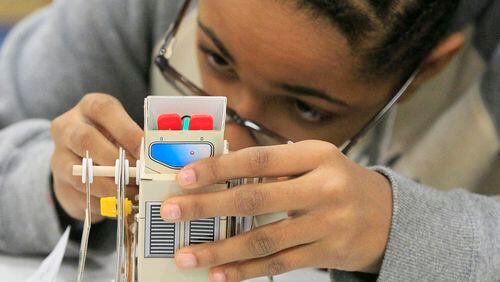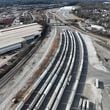In this piece, Cobb resident John Morris discusses the focus on STEM in schools today. Morris received his B.S. in electrical engineering and M.S. in computer science from Texas A&M. He also received a M.A. in science, technology, and public policy from George Washington University.
He has spent the last 18 years designing and developing software for the retail industry, most recently as a member of a research and development team responsible for demonstrating new technologies and constructing cutting edge retail applications. Morris has been a resident of North Cobb since 1992.
By John Morris
There is a great deal of concern schools are not doing enough to prepare our children to navigate a future that is dominated by technology. To address that concern, districts across the country are turning their attention to STEM (science, technology, engineering, and math) education, working diligently to add more STEM courses and more rigor.
Unfortunately, many of these efforts are based on myths. Of these myths, four are common. The first is that the science and math that underpins today’s society is different from what it was just a few years ago. It is natural to assume science and math now are different because so much has changed, but that assumption would be wrong.
Granted, the variety of STEM degrees has increased, but they all begin assuming a general education with an emphasis on science and math. The science and math fundamentals, however, have not been changing.
For example, Euclid’s Elements (about 2300 years old) is the basis of modern geometry. Modern calculus was developed in the 17th century by Isaac Newton and Gottfried Leibniz. The modern theory of the atom was developed much more recently, in the 1920s and 30s. Much of the same can be said when it comes to chemistry and physics fundamentals. We should not confuse the fact the tools with which we teach may need to change with the fact that who we teach, how much time we have to teach, and what we teach are not changing.
The second myth is that anyone can be an engineer programmer. The STEM education rhetoric has an underlying theme that everyone should aspire to be and can be an engineer or programmer. Not everyone is destined to be an engineer or programmer, no more than everyone is destined to be a poet, an artist, or a professional athlete. No amount of wishing can make it so.
Just as not everyone can work in a STEM discipline, not everyone can teach STEM disciplines. Our new commitment to STEM education is at odds with the teaching staffs at most schools, staffs not well suited to achieving new STEM goals. That’s led to more myth making. For example, the U.S. Department of Education claims disciplines such as English, history, and civics can provide a solid foundation for teaching computer science concepts.
The notion that English provides a solid foundation for teaching computer science is no less ludicrous than believing a computer science degree provides a solid foundation for teaching English. In the end, such ideas betray not only a mind-numbing ignorance of the discipline of computer science, but also a dangerous arrogance that reduces STEM skills to something that can be mastered in a moment and its practitioners to a little more than a commodity.
Finally, the myth that STEM is paramount leads to undervaluing other disciplines such as philosophy, psychology, sociology, and so on — the soft sciences. Ultimately, the best of what we create is a melding of art and science (e.g., consider a good web site, part art, part psychology, part science, part engineering). So, those who would trivialize the contributions of anything that is not STEM to technological advancement are ill-informed.
So what then must we do? First invest our time and effort in teaching the fundamentals, remembering that a high school is not a university and offers a limited curriculum — is short, focus, expect rigor, excel. Students well grounded in the fundamentals will be well prepared for college as well as a world dominated by technology.
Second, invest in informal education opportunities such as robotics, which is multi-disciplinary and has a number of vocational aspects. Informal education of this type allows one to leverage local problems, skills, colleges, and industries (e.g., applying robotics in an agricultural setting). Informal, project-oriented, education also provides students with the opportunity to build team skills and acquire years of practical experience.
Third, always satisfy the demand for the courses offered; no student should ever be told a class is full.
Fourth, encourage and foster high aspirations. For example, a student with remedial math skills as a freshmen, given sufficient motivation, tenacity, and aptitude should be able to take AP Calculus as a senior and do well — a block schedule offers a lot of opportunity for students to catch up if they have fallen behind.
Fifth, invest in tools, technologies, and practices that will extend the reach and productivity of the teacher. The classroom teacher is the most versatile and capable resource in the education establishment, but he or she only has so much time and the impact of that time is diluted by practices and tools that by today’s standards seem antiquated.
Finally, all must recognize that education cannot be improved by alienating the profession that carries it out. Even so, performance evaluations are a given. Teaching, like any other profession, is apt to have among its number some that are mediocre at best, some even incompetent. Hiring mistakes are made. Failing to recognize and anticipate that some teachers will not meet expectations comes at a high price. A child goes to kindergarten once, only once.
About the Author







